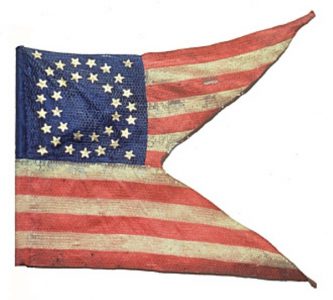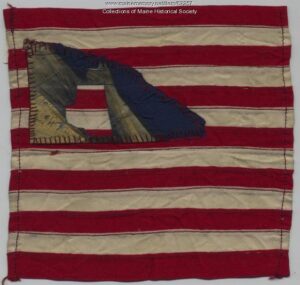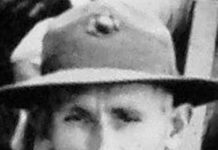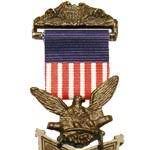In the wake of college students and pro-Palestinian groups tearing down the American flag and hoisting that of another country, and recently writing the story of a Medal of Honor recipient who earned the nation’s highest military award as a color guard preserving not only the American flag but also the colors of his Army division, it is interesting to know the history of why color guards were heroes, and the nation’s and state’s colors and patriotism are so intertwined.
It goes back to the Civil War.
Soldiers on both sides of the nation during the Civil War had color guards, men chosen from their ranks because of their health, ability, pride in their belief, and dedication to their nation, be it the Confederate States or the United States.
The color guards of a regiment were regarded in high esteem, the soldier being admired for his extraordinary bravery. It was the duty of the color guard to carry the flag where his officers directed, unarmed and under fire. He was expected to face the enemy and could never retreat or break ranks; if he did, the entire regiment might follow, and the battle and war would be lost.
Regimental flags were essential during the era when men fought face to face, gun barrel to gun barrel. Reverence surrounded their flags in addition to morale and that national pride.
The regimental flags were communication vehicles for the soldiers. Bugle calls or commands by voice could not be heard over the sounds of war, so soldiers were taught from the very beginning to ‘follow the flag.”
Regimental flags had another purpose as well. In the heat of battle, with rain, dark days and smoke-filled battlefields, regiments were often scattered, and it was vital for a soldier to be able to recognize where his own troops were. The color guard played a vital role in keeping the flag aloft to keep its soldiers aware, and “Rally round the flag” explained the importance of the color guard’s mission.
Because most regiments were formed by states or sections of states, keeping men of each state together with his fellow natives, state and regimental flags also served as morale builders…the men were fighting for their neighbors and family and swore allegiance and loyalty to their regiment.
Because of the fervor for what the flags represented, they were treated with reverence and respect, never allowed to touch the ground or disrespected, and always to be preserved from capture by the enemy. With both sides in the Civil War feeling the importance of his own regimental and American or Confederate flag, the color guard always fought valiantly to prevent his flag from being taken or surrendered to the enemy.
Each regiment had two color guards, one for the regimental colors, the other for the national flag; where possible, these color guards also had two other soldiers assigned to guard them and their mission, the flags were so valuable. The color guard and his flags, held aloft, were frequently visible targets to the enemy and the men considered it a disgrace and personal humiliation if his flag lost it to the enemy. Many Congressional Medal of honor recipients have been honored for their preservation of the America flag; many lost their lives doing it.
Just as a unit felt shame and horror at the capture of its flag, taking the flag of the enemy was greeted with celebration and honors. Newspapers often mentioned in Civil War battle stories how many enemy flags had been captured. News stories told of the eight men of the Fighting 69th, the New York Volunteer Infantry also known as the Irish Brigade, who were wounded or killed in carrying their flag at Antietam.
The story of the 16th Maine regiment at the Battle of Gettysburg became legendary. They were surrounded by Confederates, and fearful their flag would be taken, tore it into strips, each hiding a portion of it on their person. Many were captured and put into Confederate prisons, but still managed to keep their pieces of the flag preserved. When released in prisoner exchanges, many of the 16th Maine managed to bring their pieces of the flag back to Maine to be held in highest honors. Names of battles fought and won were often sewn on the flags and those torn or tattered in battle continued to signify the bravery of those who carried.





